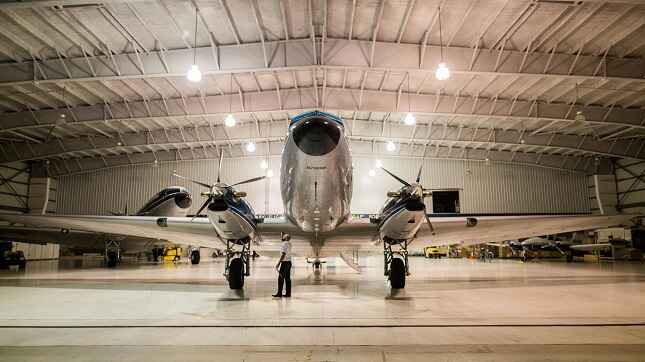Modern flying depends on accurate landings, in which every component interacts to guarantee performance and safety. Combining creative ideas with thorough testing shapes landing results. Good touchdowns result from environmental, mechanical, and human elements as well. Landing safety is defined by the complex equilibrium between technology, runway circumstances, and pilot experience, which shapes every takeoff’s corresponding landing with relentless devotion to perfection in practice.
1) Environmental Dynamics and Runway Preparedness
Run-down circumstances and atmospheric factors strongly influence safety and landing performance. Runway surfaces interact with the subtleties of the weather—wind direction, precipitation, and temperature fluctuations—to provide different difficulties. By reducing hydroplaning hazards and guaranteeing sufficient grip, runways with properly maintained friction, appropriate drainage systems, and unambiguous markings enable exact landings. Since tire traction and brake efficiency rely on surface integrity and runway shape, thorough evaluations of these factors set the basis for safe landings. Analyzes of runway slope and surface wear help to grasp better how environmental dynamics affect touchdown performance.
Perfect runway readiness calls for coordinated efforts by airport officials, maintenance staff, and weather-predicting teams. Environmental condition real-time monitoring lets operating procedures be quickly changed, thereby improving safety margins during bad weather. Modern runway materials and creative surface treatments improve durability against temperature swings and heavy precipitation by themselves. Emphasizing proactive maintenance and ongoing improvements helps to establish conditions wherein environmental problems are properly reduced.
2) Mechanical Performance and Aircraft System Reliability
Landing results depend mostly on mechanical performance, whereas aircraft system dependability directly affects safety. Together, advanced landing gear systems, brake systems, and airplane tires technologies absorb impact forces and effectively slow the aircraft. Rigid testing of engineered components guarantees durability under stress, therefore assuring that every component operates consistently—even under unforeseen circumstances. Strong structural design and premium materials help to create systems resistant to failure, distortion, and wear. Every mechanical component satisfies high criteria thanks to thorough pre-flight inspections and ongoing system monitoring. This combined strategy helps maintain operational preparedness and reduces mechanical failure risk during landings.
For system dependability, aviation maintenance personnel give frequent overhauls and precise engineering top priority. Real-time performance data and in-depth diagnostics enable personnel to handle problems and spot early warning of degradation quickly. Modern sensor technologies provide constant system health monitoring, therefore alerting teams to any deviations from ideal performance. From the landing gear of the airplane to its hydraulic and electrical control systems, this dedication to dependability guarantees consistent behavior and controlled deceleration every touchdown happens with. Advanced engineering and careful maintenance working together builds a strong structure where mechanical performance supports safe landing procedures.
3) Crew Expertise and Operational Decision-Making Under Pressure
Landing performance is largely influenced by crew knowledge as well as operational decision-making quality. Combining experience, training, and situational awareness, skilled pilots and ground support personnel negotiate the complexity of landing in many environments. Making decisions in crucial stages depends on one’s capacity to evaluate environmental elements, decipher real-time data, and adjust to fast-changing conditions. Simulations and rigorous training courses equip workers to manage challenging circumstances with accuracy and confidence. By combining automated technologies with human supervision, one promotes a cooperative approach that guarantees that every landing is carried out with great awareness of the operating environment and cautious judgment. The effectiveness of touchdown operations finally depends on the interaction of technology with human knowledge.
Constant professional growth and thorough training help the crew to handle unanticipated difficulties upon landing. Regular simulator sessions expose staff to many scenarios, therefore reinforcing methods for best approach angles, speed control, and emergency reactions. Clear communication and efficient coordination among every team member is encouraged via thorough briefings and cooperative planning meetings. This dynamic approach to under-pressure decision-making guarantees that every landing gains from the combined knowledge of seasoned experts as well as the most recent technical innovations. Emphasizing ongoing development, scenario-based training, and adaptive methods helps aircraft crews to react with agility, therefore preserving high safety standards even in the face of operational uncertainty. Every important landing finds a safe basis from the combined strength of knowledge and technology.
Conclusion
Landing performance results from a synthesis of mechanical dependability, environmental dynamics, and professional operational decision-making. Reliable airplane equipment, strong runway conditions, and trained crew judgment combine to produce a balanced approach to safe, effective touchdowns. Every landing precisely shapes continuous monitoring, proactive maintenance, and thorough training. These elements, taken together, create a future of safe flight.









































